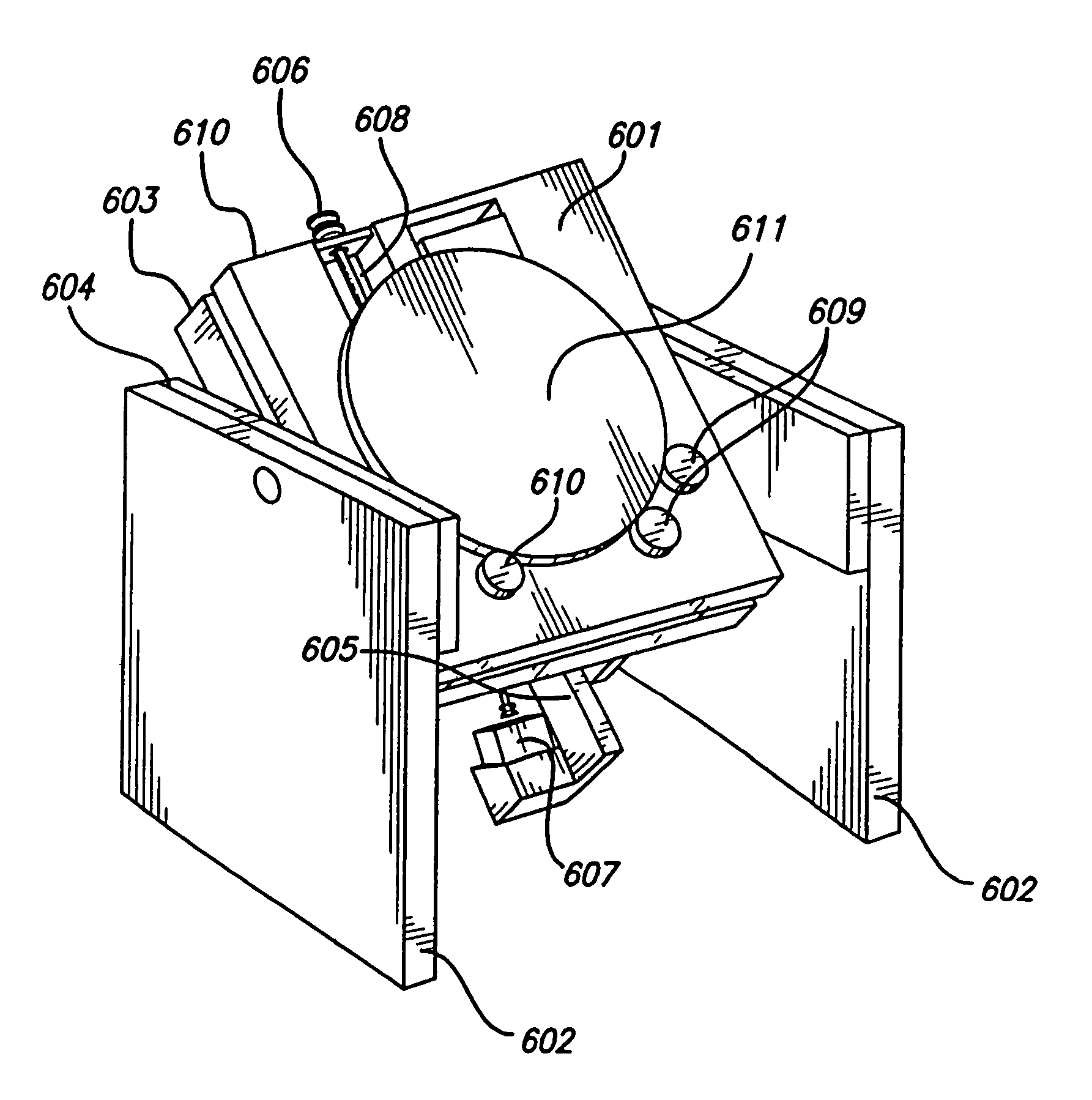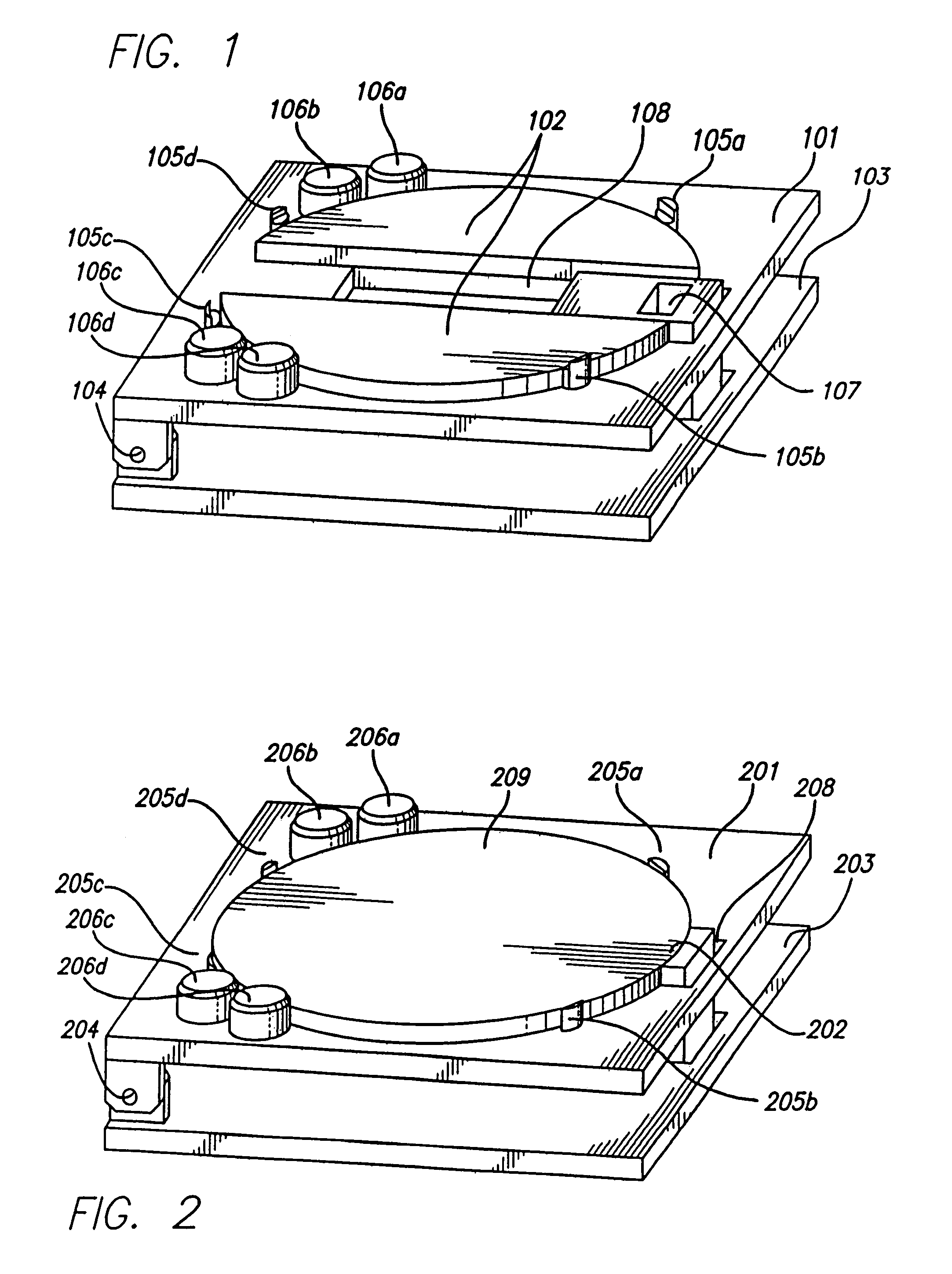Backside contamination inspection device
a contamination inspection and backside technology, applied in the field of backside contamination inspection devices, can solve the problems of excessive amount of time required for inspection, the flipping process of the semiconductor wafer had a tendency to contaminate the edges of the wafer, and the front side of the wafer could be contaminated by the flipping process, so as to reduce the chance of contamination, reduce the opportunity for edge contamination, and effectively double the throughput of inspection equipmen
- Summary
- Abstract
- Description
- Claims
- Application Information
AI Technical Summary
Benefits of technology
Problems solved by technology
Method used
Image
Examples
Embodiment Construction
[0029]FIGS. 1–3 present various views of the invention in the loaded and unloaded states. From FIG. 1, the background contamination inspection device is initially in its unloaded state, or without a semiconductor wafer located thereon. The semiconductor wafer is supported by a substantially flat table surface 101. The substantially flat table surface 101 is equipped with an air-bearing mechanism 102 upon which the semiconductor wafer may be floatably supported to eliminate contamination of the backside by contact with the table surface 101. The table surface 101 is mounted to a fixed base 103 such that the table surface 101 can tilt about an axis 104 defined at a side edge of the table surface 101. Four wafer load pins 105a–105d are mounted on the table surface 101 such that they can retract and temporarily maintain the wafer. The wafer load pins 105a–d are located in a circular pattern concentric with the air-bearing mechanism 102 and semiconductor wafer which is to be loaded. Furt...
PUM
| Property | Measurement | Unit |
|---|---|---|
| angle of tilt | aaaaa | aaaaa |
| size | aaaaa | aaaaa |
| optical inspection | aaaaa | aaaaa |
Abstract
Description
Claims
Application Information
 Login to View More
Login to View More - R&D
- Intellectual Property
- Life Sciences
- Materials
- Tech Scout
- Unparalleled Data Quality
- Higher Quality Content
- 60% Fewer Hallucinations
Browse by: Latest US Patents, China's latest patents, Technical Efficacy Thesaurus, Application Domain, Technology Topic, Popular Technical Reports.
© 2025 PatSnap. All rights reserved.Legal|Privacy policy|Modern Slavery Act Transparency Statement|Sitemap|About US| Contact US: help@patsnap.com



